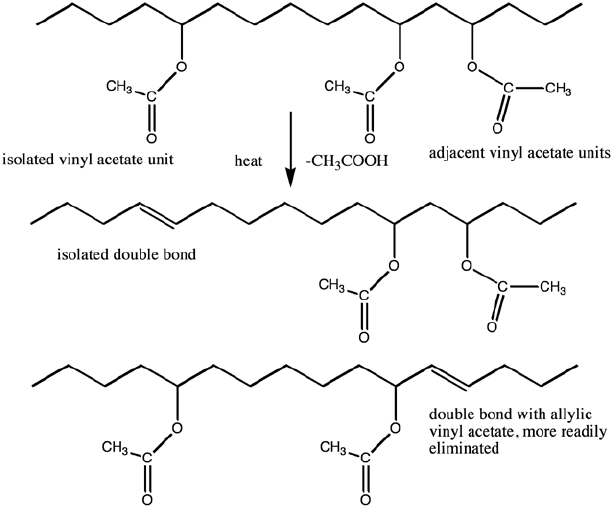Yes, EVA does decompose, but it takes several decades to centuries in natural environments.
Table of Contents
Properties of EVA
Chemical Structure
Ethylene-Vinyl Acetate, commonly known as EVA, is a copolymer of ethylene and vinyl acetate. The ratio between ethylene and vinyl acetate can vary, affecting the properties of the material. In the molecular structure, vinyl acetate usually contributes to the softness and flexibility, while ethylene adds strength and durability. You can learn more about polymers through this Wikipedia link on Polymers.

Physical Properties
EVA is known for its excellent flexibility, rubber-like texture, and ability to resist cracks. It has a low-temperature toughness and is also UV resistant. These characteristics make it particularly useful in various applications ranging from foam sheeting to hot-melt adhesives. For more in-depth knowledge on material properties, you can refer to this Wikipedia link on Material Properties.
Common Uses
EVA has a broad range of applications due to its versatile properties. Some of the most common uses include:
Sporting Goods: Used in the making of mats, helmets, and pads.
Footwear: Forms the cushioning material in many types of shoes.
Medical Devices: Used in drug delivery systems and surgical equipment.
Packaging: Serves as padding material in packaging of fragile goods.
To know more about industrial applications of various materials, check out this Wikipedia link on Industrial Applications.
Factors Affecting Decomposition
Environmental Conditions
The rate at which EVA decomposes significantly depends on environmental factors such as temperature, humidity, and the presence of microorganisms. Warmer climates generally accelerate the breakdown of EVA, although it’s crucial to note that decomposition is still quite slow compared to biodegradable materials. High levels of humidity can also speed up this process, mainly if microorganisms that break down EVA are present. For further details on environmental factors affecting material decay, you can visit this Wikipedia link on Environmental Degradation.
Exposure to Light
Ultraviolet (UV) radiation from sunlight can cause the breakdown of many materials, including EVA. While EVA does have some degree of UV resistance, extended exposure to sunlight can still contribute to its decomposition. Over time, UV rays break down the chemical bonds in EVA, causing it to become brittle and discolored. If you’re interested in how light affects materials, consider exploring this Wikipedia link on Photodegradation.
Mechanical Stress
Physical wear and tear also play a role in the decomposition of EVA. Activities such as walking on EVA-based shoe soles or using EVA mats in high-traffic areas contribute to the material’s physical breakdown. This is not chemical decomposition but rather a physical disintegration that can eventually lead to smaller pieces, which may be more manageable for natural degradation processes. Mechanical stress and its effects on materials are discussed in detail on this Wikipedia link on Material Fatigue.
Current Research on EVA Decomposition
Laboratory Studies
Recent laboratory studies aim to understand how quickly EVA decomposes under controlled conditions. Researchers simulate various environmental conditions like heat, humidity, and UV exposure to measure the rate of EVA’s breakdown. Some of these studies suggest that under intense conditions, EVA starts showing signs of wear and chemical change within a few months. However, complete decomposition could still take several years. You can learn more about how laboratory studies are conducted in scientific research through this Wikipedia link on Experimental Research.
Real-world Observations
In addition to lab studies, real-world observations have been made to understand how EVA decomposes naturally. For instance, EVA items discarded in landfills or the ocean are monitored over time to observe changes in their physical and chemical structure. Interestingly, the rate of decomposition tends to be slower in real-world scenarios compared to the lab, owing to less controlled and often less intense conditions. These observational studies offer essential insights into how long EVA might persist in various ecosystems. For more on observational research, check out this Wikipedia link on Observational Study.
Decomposition Timeline
One of the key findings of both laboratory and real-world studies is the timeline for EVA decomposition. While the material does show signs of physical and chemical breakdown under certain conditions, it appears that complete decomposition in a natural environment could take anywhere from decades to centuries. This long decomposition timeline has prompted concern among environmentalists and policymakers and is now a subject of active research. To know more about how long different materials take to decompose, you can refer to this Wikipedia link on Waste Decomposition.
Environmental Impact
Waste Management Concerns
The slow decomposition rate of EVA poses a significant challenge for waste management systems. Unlike biodegradable materials, EVA can remain intact for years or even decades, taking up valuable space in landfills. This long lifespan also means that EVA contributes to the problem of waste accumulation, leading to increased costs for waste management services. You can read more about waste management issues through this Wikipedia link on Waste Management.
Ecological Consequences
EVA’s resilience also has ecological ramifications. Pieces of EVA, especially when broken down into smaller particles, can enter waterways and oceans, posing a threat to marine life. These particles can be ingested by animals, leading to potential harm or death. The material’s presence in natural habitats disrupts ecosystems and contributes to pollution. For more on the impact of waste on ecosystems, you can refer to this Wikipedia link on Environmental Pollution.
EVA in Landfills
As landfills are often the final resting place for waste, the accumulation of EVA in these settings is a growing concern. Because EVA does not readily decompose, it remains in landfills indefinitely, contributing to landfill overflow. Furthermore, the material’s chemical stability means that it does not break down into harmless substances but remains as EVA, posing long-term environmental risks. You can learn more about landfill issues by checking out this Wikipedia link on Landfills.

Alternatives and Solutions
Biodegradable Alternatives
One of the most promising routes for reducing the environmental impact of EVA is the development of biodegradable alternatives. These substitutes aim to mimic the positive attributes of EVA, such as flexibility and durability, while breaking down more readily in the environment. Some of these include materials made from natural fibers or bio-based resins. For more details on biodegradable materials, you can read this Wikipedia link on Biodegradable Plastic.
Recycling Methods
Recycling is another solution for mitigating EVA’s impact on the environment. Various techniques are in development for efficiently recycling EVA, including mechanical and chemical recycling methods. Mechanical recycling involves grinding down EVA products into small particles, which are then melted and remolded into new products. Chemical recycling focuses on breaking down EVA to its constituent components for reuse. For more information on recycling techniques, you can refer to this Wikipedia link on Recycling.
Policy Implications
Given EVA’s environmental impact, there’s a growing need for policies that regulate its use and disposal. These could include imposing taxes on EVA products, creating incentives for using biodegradable alternatives, or establishing more stringent recycling requirements. Public awareness campaigns can also play a crucial role in encouraging responsible use and disposal of EVA products. For insights into how policies can influence environmental protection, you can read this Wikipedia link on Environmental Policy.
Case Studies
EVA Decomposition in Marine Environments
Researchers have specifically examined the impact of EVA on marine environments. One case study observed how EVA debris accumulated along a coastal region affected both the water quality and local marine life. The study found that particles of EVA were ingested by fish, leading to health problems among the marine population. The research serves as a stark reminder of the material’s long-lasting effects on ecosystems. For more insights into marine pollution, you can visit this Wikipedia link on Marine Pollution.
EVA Decomposition in Landfills
Another case study focused on monitoring EVA decomposition in a landfill over a period of several years. The study found that EVA showed negligible signs of decomposition even after years of exposure to the elements. This data adds urgency to the need for effective waste management solutions that can handle materials like EVA. For further information on landfill studies and waste management, check out this Wikipedia link on Landfill Research.

EVA in Commercial Products
A compelling case study looked at the lifespan and environmental impact of EVA in commercial products, such as footwear and packaging materials. The study found that while EVA provides excellent performance and durability, its long-term environmental costs are substantial, mainly when products end up discarded irresponsibly. This has led to calls for companies to adopt more sustainable materials in their products. For more on the role of commercial products in waste generation, you can refer to this Wikipedia link on Commercial Waste.






